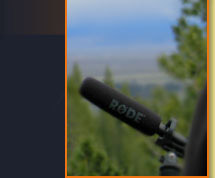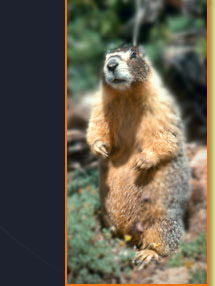The Sierra Nevada Alliance released the results of two years of research documenting that sprawling patterns of growth in the Sierra are more expensive and dangerous to protect from wildfire. The report finds that major wildfires like the Angora Fire in South Lake Tahoe will become more common and more destructive, if current growth patterns continue.
The new report, entitled Dangerous Development: Wildfire and Rural Sprawl in the Sierra Nevada, discovered that between 1990 and 2000, the number of people living in extreme or very high fire threat areas of the Sierra increased by 16%.
As the Sierra continues to grow, this trend of more development in wildfire-hazard areas will continue. In the Sierra, for example, the population is expected to triple by 2040, and this new report finds that 94% of the land slated for residential development is in areas considered “extreme” or “very high” fire threat.
Unsafe growth patterns increasing fire danger
When homes are scattered in remote, rugged locations, it is very difficult for firefighters to reach those homes in time, safely evacuate residents, and defend the homes from approaching wildfire. Roads are often too narrow for fire trucks to navigate, and there are no fire hydrants or other sources of water for firefighters to use. There is often more flammable vegetation in these sprawling, remote areas, making it easier for fires to get out of control and threaten the lives of residents and firefighters.
“Every day we are building new houses in extremely dangerous parts of California and the Sierra,’ said Autumn Bernstein, Land Use Coordinator for Sierra Nevada Alliance and the author of the report. “This should be a wake-up call that destructive wildfires like the recent Angora Fire in Lake Tahoe will become more common, unless we all start working together to plan ‘fire-smart’ communities.”
‘Fire-smart growth’ can save lives and money
In contrast, denser patterns of development, like those in historic downtown Truckee, Nevada City or Quincy, are safer and cheaper to defend from wildfire. The report demonstrates that these historic communities have a smaller perimeter to defend against an approaching wildfire. Homes are clustered together rather than spread apart, so firefighters can defend many homes at once. Because there are better roads and centralized water systems, firefighters can more quickly reach fires approaching homes and put them out before they can ignite homes.
“Communities already face huge challenges when it comes to preventing catastrophic wildfire,” said Jay Watson, board member of the California Fire Safe Council. “Developers and local officials need to carefully consider risks to residents and firefighters when deciding where and how our communities grow. ”
Clustered development also makes it cheaper and easier to reduce fuels in the surrounding wildlands. When homes are clustered together, the number of acres that need vegetation management to reduce fire danger is dramatically lower than in the case of scattered, low-density development.
“We can’t afford to keep growing in unsafe patterns,” said John Pickett, Tahoe Basin Coordinator for the Nevada Fire Safe Council. “As the Sierra grows, we should focus on infill development that will keep our communities safer from wildfire.”
Strategies for ‘Fire-Smart Growth’
The report recommends that counties and cities in California and the Sierra should focus on fire-smart growth strategies.
1. Infill first: Focusing new development within existing communities can help minimize new fire danger. Counties and cities should identify infill sites such as vacant lots, empty warehouses and old railroad yards and channel new growth into those sites. A good example of this type of development is the Truckee Railyard project, which will add new houses on a vacant railyard in downtown Truckee.
2. Concentric outward growth: When there is no more room for infill development, communities should grow outward in a compact and orderly fashion, building new neighborhoods that mirror the historic, compact design of the older community.
3. Restrict rural sprawl and leapfrog growth: Counties and cities should restrict sprawling, low-density growth and leapfrog subdivisions that encroach into wildland areas and increase wildfire danger.
“We can build thriving communities that are safer and sustainable, by practicing ‘fire-smart growth,’’ said Bernstein. “Or we can continue to build in dangerous patterns, and face more tragedies every fire season to come. The choice is ours.”
The full report is available at the Sierra Nevada Alliance website.
















